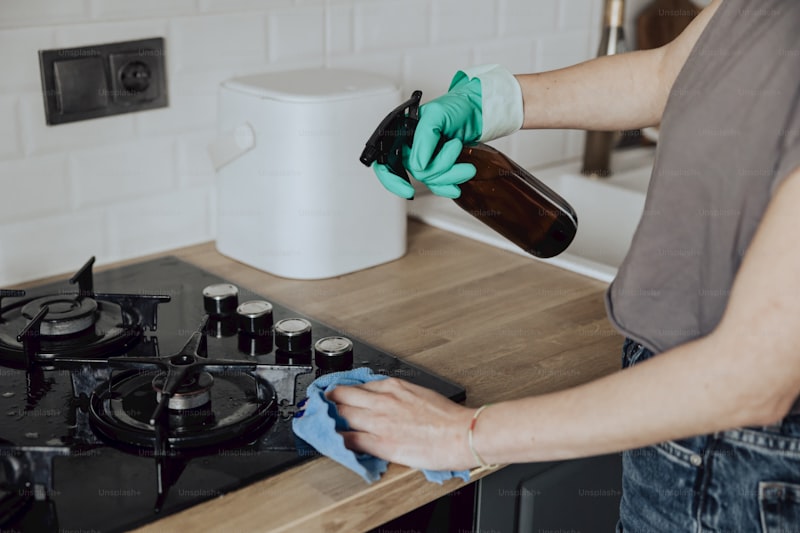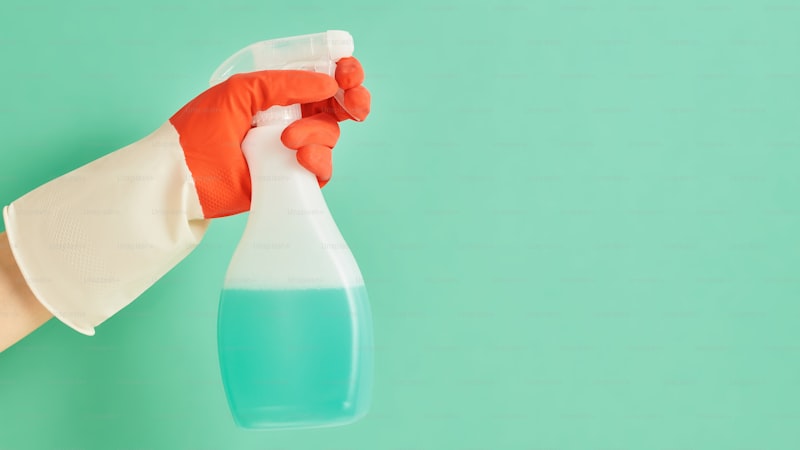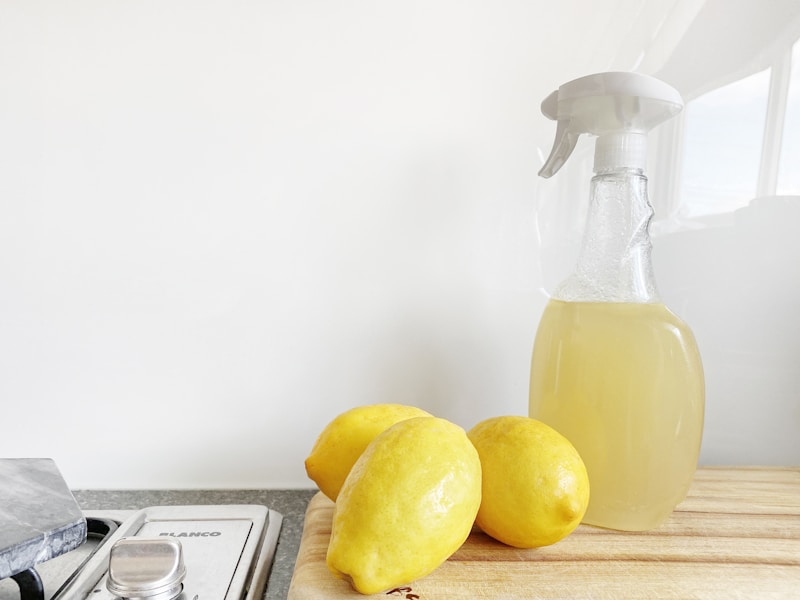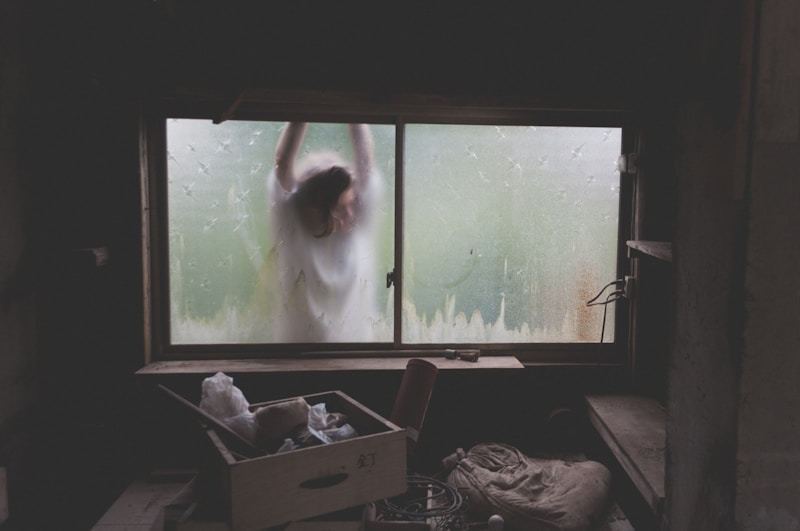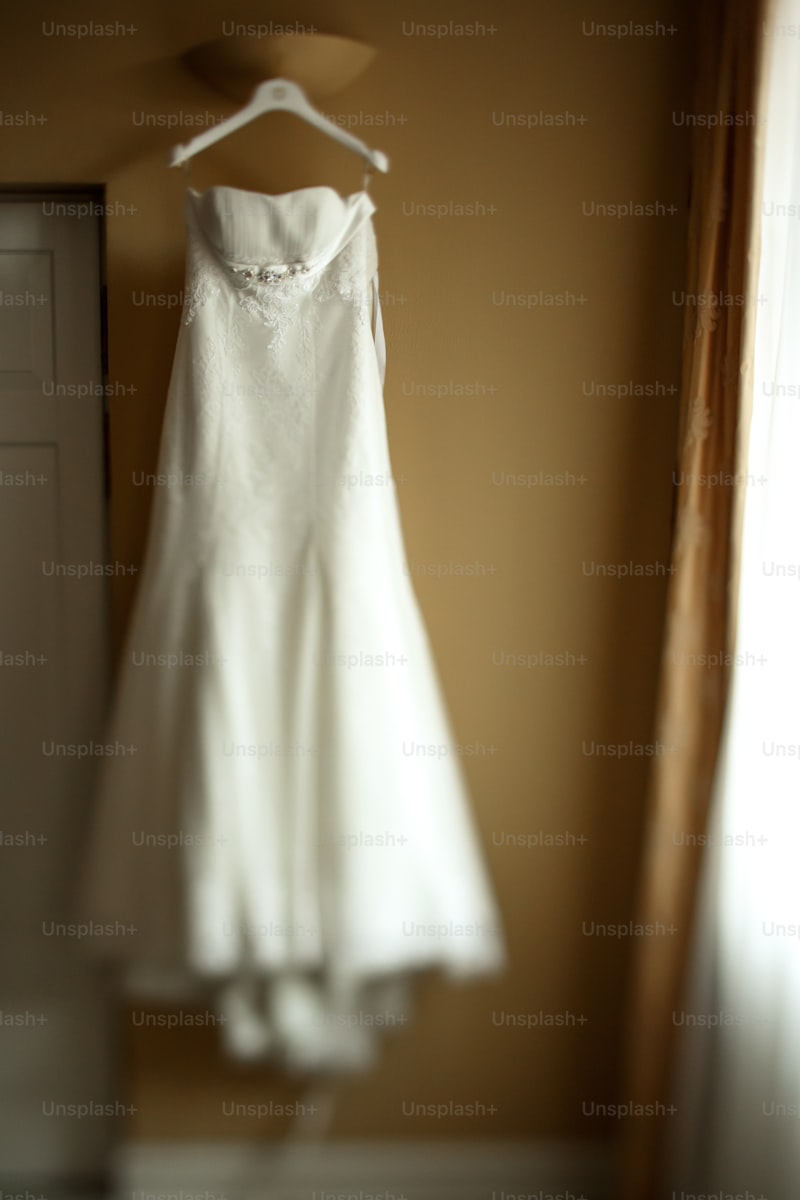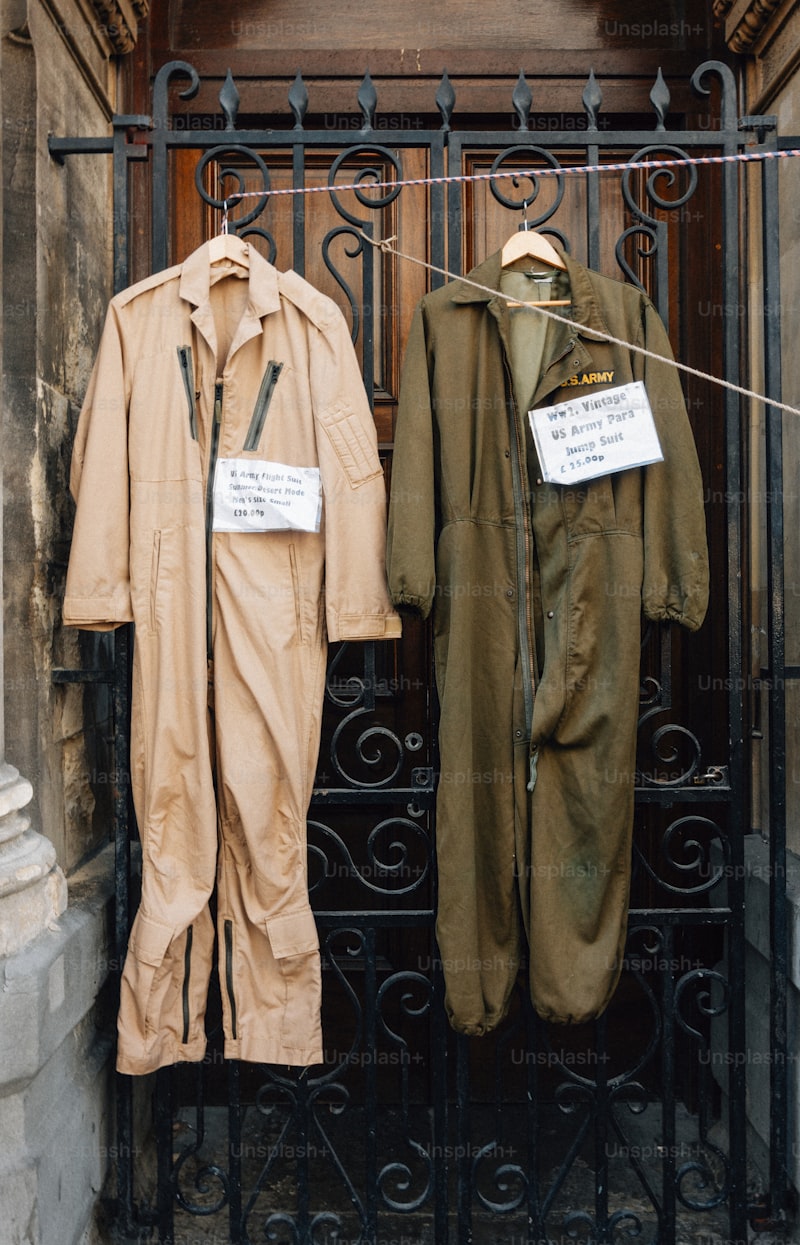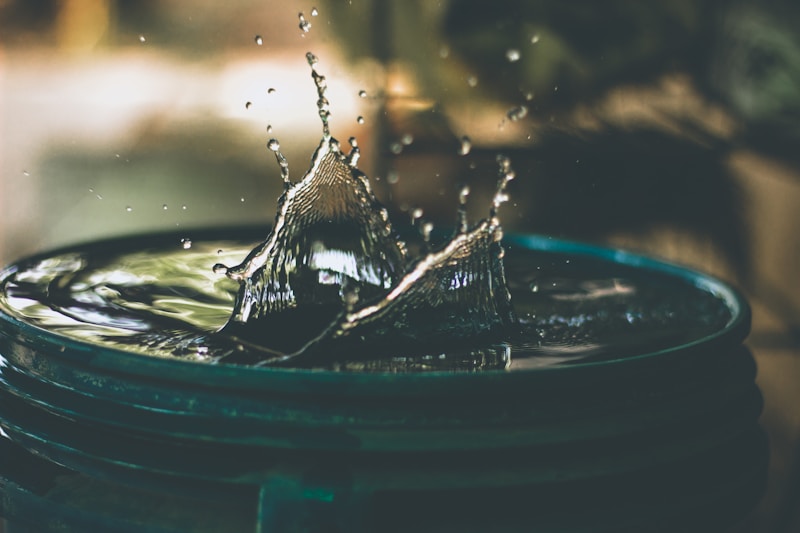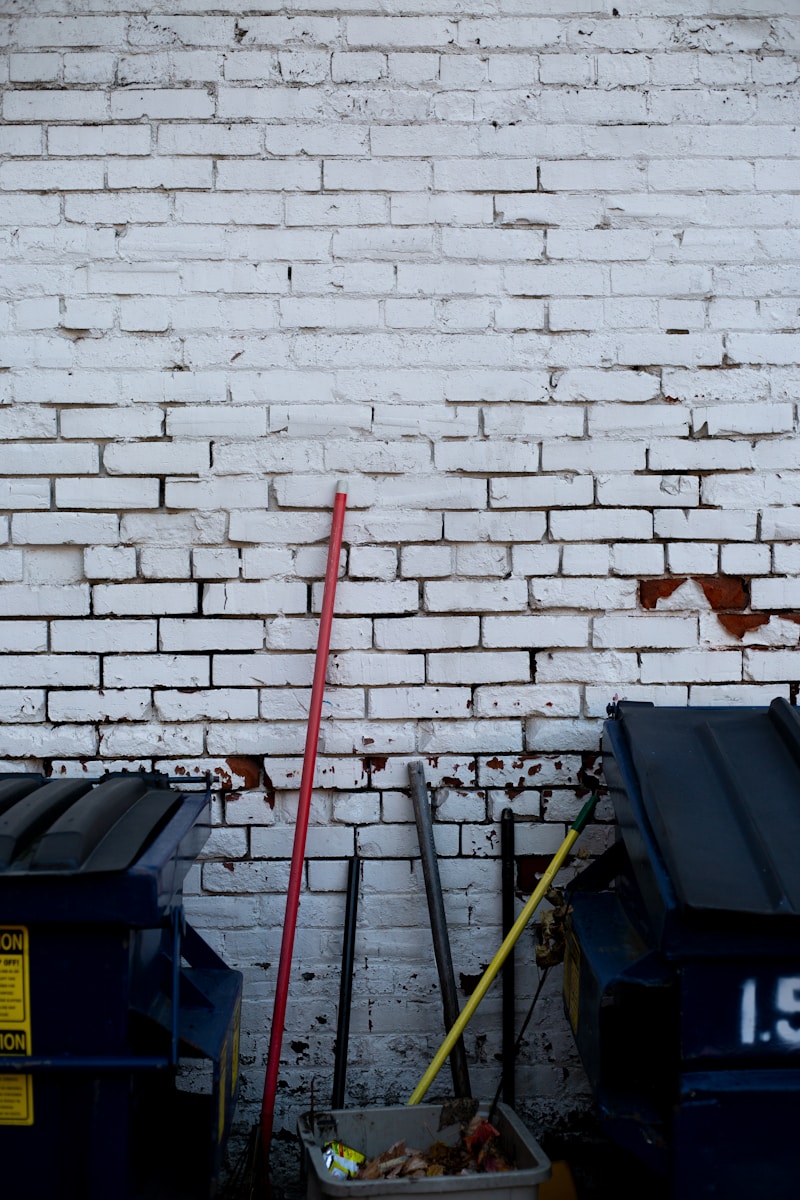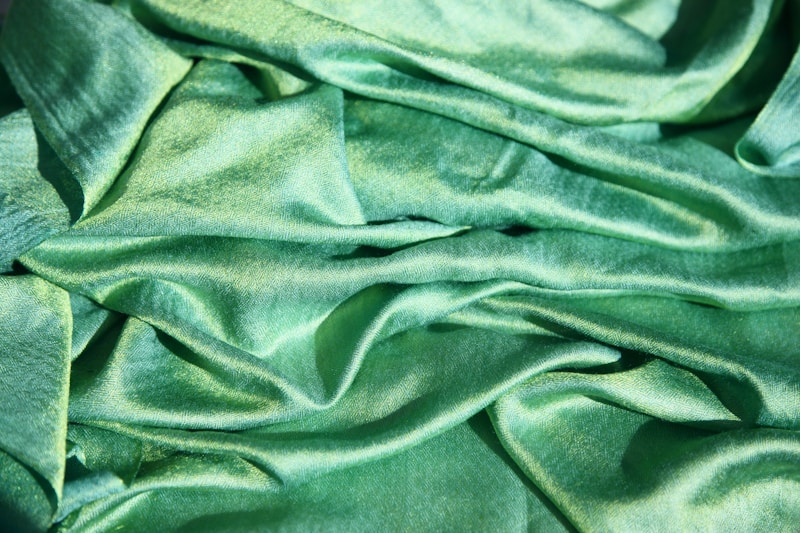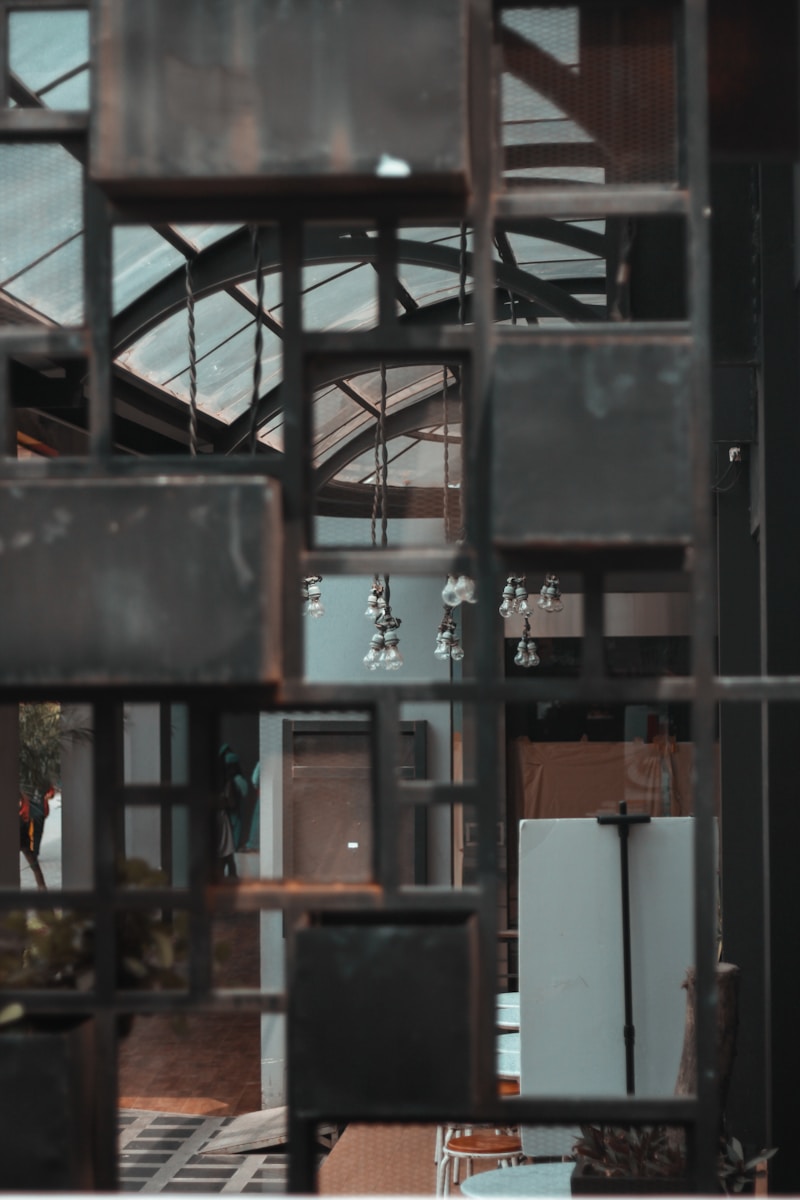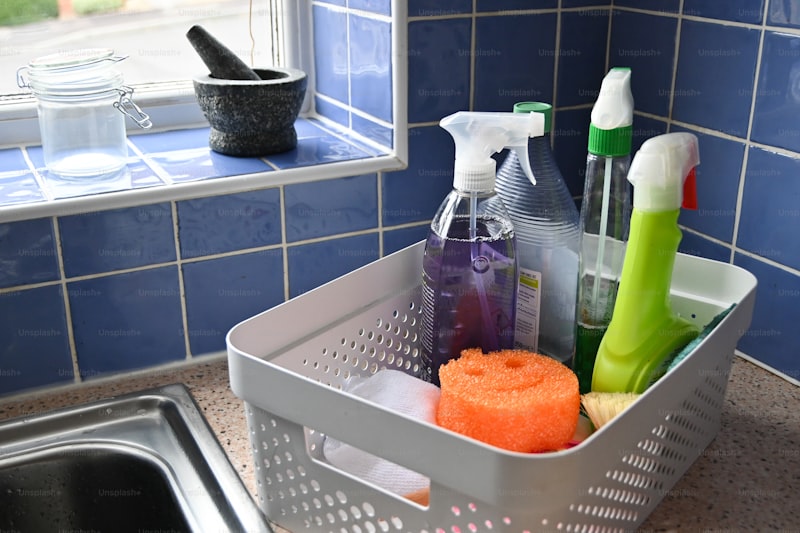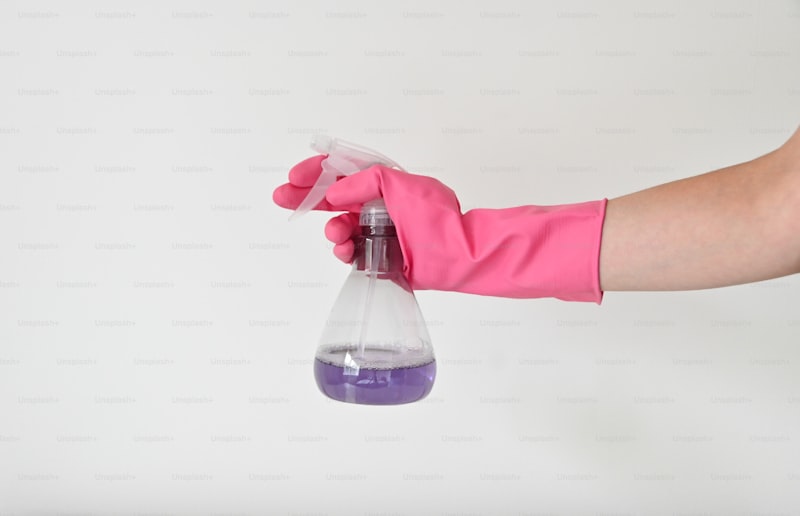A Comprehensive Guide to Avoiding Harsh Chemicals in Your Daily Life
Understanding the Importance of Avoiding Harsh ChemicalsIn today’s world, where pollution and toxins are rampant, avoiding harsh chemicals has become a crucial aspect of maintaining a healthy lifestyle. From personal care products to household cleaners, many items we use daily contain harmful substances that can negatively impact our health and the environment. This article will delve into what harsh chemicals are, the risks associated with them, and practical steps you can take to minimize exposure.What are Harsh Chemicals?Harsh chemicals are substances that can potentially cause harm to human health and the environment. They are commonly found in various products, including:Household cleanersPersonal grooming productsFood additivesIndustrial productsExamples of harsh chemicals include phthalates, parabens, formaldehyde, and ammonia. Prolonged exposure can lead to serious health issues, such as respiratory problems, skin irritations, and even chronic diseases.Why You Should Avoid Harsh ChemicalsThe consequences of using products that contain harsh chemicals are concerning. Here are some critical reasons to prioritize natural and chemical-free products:Health Risks: Long-term exposure to harsh chemicals has been linked to various health issues, including cancers, hormone disruptions, and developmental problems in children.Environmental Impact: Many chemicals pollute our water systems, harm wildlife, and contribute to climate change.Sensitive Populations: Children, pregnant wo...
Ultimate Guide to Color Fading Prevention: Keep Your Colors Vibrant
In a world where colors play an integral role in aesthetics and branding, color fading is a challenge that many face. This phenomenon not only affects clothes but also artwork, car paint, and even home décor. Understanding color fading prevention is crucial for anyone looking to maintain the vibrancy of their items. In this article, we'll delve into various aspects of color fading, the importance of prevention, effective strategies, and expert tips. Let’s explore how to keep your colors looking fresh for years to come!Understanding Color FadingColor fading occurs when the pigments in materials break down or degrade, resulting in dull or washed-out appearances. Several factors contribute to this process. Here are some significant culprits:FactorDescriptionSunlight ExposureUV rays can bleach colors, especially in textiles and artwork.Environmental ConditionsHumidity, temperature fluctuations, and air pollutants can accelerate fading.Chemical ReactionsSubstances in cleaning agents may cause discoloration through chemical reactions.Washing TechniqueImproper washing methods can lead to premature fading of fabrics.Understanding these factors enables you to take preventative measures to protect your valuable items from fading.The Importance of Color Fading PreventionPreventing color fading is essential for several reasons:Aesthetic Appeal: Vibrant colors enhance the visual appeal of your belongings, from clothes to décor.Value Retention: For art collectors and car enthusiasts, maint...
Discover the Incredible Benefits of Steam Cleaning for Your Home
Understanding the Upsides of Steam CleaningWhen it comes to keeping our homes sparkling clean, many of us are looking for methods that are effective, eco-friendly, and safe for our families. One such method that has gained immense popularity in recent years is steam cleaning. In this article, we will explore the numerous Steam cleaning benefits, providing you with all the information you need to consider this impressive cleaning technique.What is Steam Cleaning?Steam cleaning involves the use of high-temperature steam to clean and sanitize surfaces. This method is not only efficient but also chemical-free, making it an appealing option for those who are conscious about using harmful substances in their homes. Steam cleaners work by converting water into steam, which is then applied to various surfaces to break down dirt, grime, and bacteria. One of the main advantages of steam cleaning is its effectiveness on a variety of materials, including tile, carpets, upholstery, and even kitchen appliances.The Health Benefits of Steam CleaningOne of the primary benefits of steam cleaning lies in its ability to enhance the health of your living environment. Below are some key health benefits: Elimination of Allergens: Steam cleaning effectively kills dust mites, mold spores, and pet dander, providing relief for allergy sufferers. Sterilization: The high temperatures of steam can eliminate up to 99.9% of bacteria and viruses, promoting a safer home for you and your family. Reduc...
Essential Hand Wash Recommendations for Optimal Hygiene
Introduction to Hand Wash RecommendationsIn today's world, maintaining proper hygiene has become more crucial than ever. One of the most effective ways to prevent the spread of germs and infections is through washing hands properly. This article will explore essential hand wash recommendations that everyone should follow, including tips for selecting the right soap, the best washing techniques, and common misconceptions about hand hygiene. By the end of this article, you will be equipped with the knowledge to maintain effective hand hygiene.The Importance of Hand WashingHand washing is a simple yet powerful practice that can significantly reduce the risk of illness. According to the World Health Organization (WHO), hand washing with soap can decrease the incidence of respiratory infections by 16% and diarrheal diseases by 23%. These statistics underscore the importance of proper hand hygiene, particularly in preventing the spread of contagious diseases.Choosing the Right SoapSelecting the right hand soap is paramount to effective hand washing. Here are some hand wash recommendations:Type of SoapKey FeaturesBest UseAntibacterial SoapContains ingredients that kill bacteria.Recommended in healthcare settings.Foaming SoapProduces foam with less product, making it economical.Good for general use.Liquid SoapConvenient and easy to use.Ideal for home or office.Bar SoapDurable and often cheaper.Great for households with multiple users.Proper Hand Washing TechniquesEven the best soap w...
Eco-Friendly Cleaning Solutions: A Sustainable Choice for a Cleaner Future
Introduction to Eco-Friendly Cleaning SolutionsIn today’s world, sustainability is more than just a buzzword; it's an essential standpoint for consumers. With increasing awareness of environmental issues, people are turning to eco-friendly cleaning solutions to maintain cleanliness in their homes and workplaces. These solutions not only help in keeping our surroundings clean but also minimize the impact on the planet. In this article, we will explore various aspects of eco-friendly cleaning solutions, their benefits, how they compare to conventional cleaners, and tips for making your own cleaning products at home.What Are Eco-Friendly Cleaning Solutions?Eco-friendly cleaning solutions are products made from natural ingredients that are not harmful to the environment. Unlike traditional cleaning products that often contain harsh chemicals, eco-friendly alternatives derive their cleaning power from biodegradable substances. This means they break down easily and do not contribute to pollution or harm aquatic life when disposed of.The Benefits of Using Eco-Friendly Cleaning SolutionsBenefitDescriptionHealthier HomesEco-friendly cleaners are free from toxic chemicals, reducing the risk of respiratory issues and skin irritations for you and your family.Environmental ProtectionUsing biodegradable cleaning products helps protect water sources from contamination and reduces our carbon footprint.Averseness to AllergiesThey are less likely to trigger allergies or sensitivities since the...
Effective Spot Cleaning Strategies for a Pristine Home
Understanding Spot Cleaning: What You Need to KnowSpot cleaning is an essential home maintenance strategy that can keep your living space looking fresh and tidy without the need for deep cleaning every time. This article delves into various spot cleaning strategies that can help you tackle spills and stains quickly and efficiently.What is Spot Cleaning?Spot cleaning refers to the practice of removing specific stains or spills from surfaces rather than conducting a full clean of the entire area. This targeted approach conserves time and effort while ensuring that your home remains pristine. Whether it's a quick carpet mishap or a food stain on your favorite sofa, effective spot cleaning can make all the difference.The Importance of Spot CleaningImplementing proper spot cleaning techniques can prevent permanent damage to your furniture, carpets, and upholstery. It helps in maintaining a hygienic environment by removing food particles and potential allergens. Moreover, regular spot cleaning can extend the life of your furniture and other home accessories.Common Spot Cleaning StrategiesHere are some practical spot cleaning strategies that can be integrated into your routine:StrategyTools NeededStepsBlottingPaper towels, clothGently blot the stain, avoiding rubbing.Homemade CleanersWhite vinegar, baking soda, dish soapCreate a solution, apply to the stain, and blot.Commercial Stain RemoversSpot cleaner, brushApply as per the product instructions.Steam CleaningSteam cleanerUse stea...
Essential Considerations for Choosing Dry Cleaning Services
When it comes to maintaining the integrity of your garments, understanding dry cleaning considerations is vital. Many individuals find themselves asking questions about when to dry clean their clothes, which fabrics are suitable, and how to choose the right dry cleaning service. This comprehensive guide will delve into the essential aspects of dry cleaning, equipping you to make informed decisions about your wardrobe care.Why Choose Dry Cleaning?Dry cleaning is a process that uses chemical solvents to clean clothes, a method that is particularly beneficial for certain fabrics and stains. Here are some reasons why dry cleaning can be a preferable choice: Fabric Care: Delicate fabrics such as silk, wool, and leather often require dry cleaning to avoid damage and preserve their quality. Stain Removal: Dry cleaning is effective in removing oil-based stains, which water-based processes may struggle with. Shape Retention: Dry cleaning helps maintain the structure and form of tailored clothing. Key Dry Cleaning ConsiderationsWhen contemplating dry cleaning, keep the following considerations in mind:1. Fabric TypesNot all fabrics are suitable for dry cleaning. Common materials that can be dry cleaned include: Wool Silk Cashmere Polyester RayonConversely, fabrics like cotton, linen, and some blends may be laundered in water. Always check the care label for guidance.2. Stain TypesUnderstanding the types of stains that can be removed through dry cleaning is cruci...
Essential Long-term Storage Tips: Keep Your Belongings Safe and Sound
Effective long-term storage is crucial for preserving not just your belongings but also your peace of mind. Whether you're transitioning between homes, storing seasonal items, or just looking to declutter, having a solid plan is key. In this article, we will delve into essential long-term storage tips, covering various aspects of the process that will keep your items safe, organized, and easy to access. Let’s explore what you need to know to ensure your materials remain in excellent condition.Understanding the Importance of Long-term StorageLong-term storage refers to the process of storing items for an extended period, typically ranging from several months to years. This can involve personal items, furniture, documents, and even vehicles. Understanding why you need effective storage strategies is the first step to success.Prevents Damage: Poor storage can lead to dust buildup, moisture damage, and pests.Maximizes Space: Organizing your items into a storage solution can free up space in your home.Easy Access: Properly packed items are easier to locate when needed.Choosing the Right Storage FacilityThe first consideration in your long-term storage strategy is to choose the right facility. Here are some critical points to consider:Climate Control: If you’re storing sensitive items such as electronics, artwork, or documents, look for a climate-controlled unit.Security Features: Ensure the facility has robust security measures like surveillance cameras and gated access.Accessibil...
Mastering Odor Elimination Techniques: A Comprehensive Guide
Understanding Odor Elimination TechniquesUnpleasant odors can disrupt our daily lives, whether at home, in the workspace, or even in our vehicles. Effective odor elimination techniques not only improve our environments but also contribute to better health and well-being. This article dives into various odor elimination methods, tips, and tricks that can help you regain control over your space.The Science of Odor ControlBefore delving into specific odor elimination techniques, it's essential to understand the science behind odors themselves. Odors are caused by volatile organic compounds (VOCs) that evaporate into the air. These compounds can originate from various sources, including food, pets, mold, and household products. An effective odor elimination strategy targets the source of these odors, neutralizing them and preventing their return.Common Sources of Odors Source of Odor Potential Solutions Kitchen waste Regular disposal, odor-absorbing bags Pets Regular grooming, specialized cleaners Mold Proper ventilation, moisture control Stale air Air purifiers, frequent airing out Effective Odor Elimination Techniques1. VentilationOne of the simplest yet most effective odor elimination techniques is improving ventilation. Opening windows and doors allows fresh air to circulate, helping to dilute and remove stale or unpleasant smells. Consider using exhaust fans in kitchens and bathrooms to further enhance air quality.2. Natural A...
Everything You Need to Know About the Restoration of Bridal Gowns
The restoration of bridal gowns is a significant undertaking that many brides and families may consider after the wedding day. Whether due to wear and tear, storage damages, or simply wanting to preserve the beautiful memories associated with the gown, understanding the process is key to ensuring your bridal attire stays as pristine as the day you wore it. In this article, we’ll explore various aspects of bridal gown restoration, the benefits it offers, and how to choose a reliable service.Why Consider Restoration of Bridal Gowns?Bridal gowns are often one of the most cherished possessions a bride can own. They symbolize love, commitment, and beautiful memories. Here are a few reasons why restoration of bridal gowns should be on your radar: Preservation: Many families pass down wedding dresses through generations. Restoration can help keep the gown in excellent condition for future brides. Emotional Value: Reviving the gown can reawaken joyous memories and create a lasting connection to the special day. Aesthetic Appeal: A beautifully restored gown can look brand new, allowing new brides to wear it or showcasing it during an anniversary celebration.Common Issues Requiring RestorationOver time, bridal gowns can encounter various issues, including: Issue Explanation Stains Wine, food, or makeup stains can mar the beauty of your gown. Tears and Rips Fabric can weaken and become damaged, requiring expert repai...
Essential Maintenance Tips for Different Fabrics: A Guide to Keeping Your Wardrobe Fresh
Understanding Fabric Care: Importance of Maintenance for Different FabricsMaintaining the integrity and appearance of your clothing requires an understanding of the different types of fabrics and the care they need. This guide will delve into the essential maintenance techniques for various fabrics, ensuring your favorite pieces remain in top condition. The Different Types of FabricsFabrics can be broadly categorized into natural and synthetic materials. Each category includes various types of fabrics that require specific care methods. Below are some common fabric types and their maintenance requirements:Fabric TypeCare InstructionsCottonMachine washable, tumble dry low, may be ironed on medium heat.WoolHand wash or dry clean only, lay flat to dry, avoid heat.Synthetic (Polyester, Nylon)Machine washable in cold water, gentle cycle, tumble dry on low.LinenHand wash or machine wash on a gentle cycle, iron while damp.SilkDry clean recommended, can be hand washed in cold water, air dry.Importance of Proper MaintenanceProper maintenance of fabrics not only enhances their appearance but significantly extends their longevity. Neglecting to care for your garments can lead to irreversible damage, fading, pilling, and even shrinkage. Here, we outline the maintenance requirements for various popular fabrics.Cotton MaintenanceCotton is known for its durability and comfort, making it a popular choice for everyday wear. While it is machine washable, care should be taken with water tempera...
Mastering the Art of Handling Embellishments Carefully
Understanding Embellishments in Art and DesignEmbellishments are decorative elements that enhance the aesthetic appeal of various forms of art and design, from fashion to home decor. Understanding how to handle these embellishments carefully is crucial for artists, designers, and enthusiasts alike. This article delves into the nuances of managing embellishments effectively, offering tips, techniques, and insights into their proper application.The Importance of EmbellishmentsEmbellishments serve not just as decorative features but also as critical elements that can transform a simple piece into a work of art. When applied judiciously, they can increase the value and appeal of a project. However, improper use can lead to a chaotic appearance that detracts from the overall design.What Are Embellishments?Embellishments can take various forms, including but not limited to: Beads Sequins Laces Ribbons Fabrics PaintsEach type has its unique characteristics, and understanding these is essential when planning to incorporate them into your designs.Taking the Right Approach to Handling EmbellishmentsWhen dealing with embellishments, particularly in fashion design, the approach must be methodical and thoughtful. Here are some strategies on how to handle embellishments carefully: Strategy Description 1. Planning the Design Before starting, sketch out your design to see where embellishments will fit best. 2. Choose Quality Materials Opt for high-quality ...
Ultimate Guide to Your Bridal Gown Inspection Checklist
Bridal Gown Inspection Checklist: Ensuring Your Perfect DayYour wedding day is one of the most important days of your life, and your bridal gown is undoubtedly one of the most significant elements of that day. Ensuring that your gown is in pristine condition before walking down the aisle is crucial. This article provides a comprehensive bridal gown inspection checklist to help you ensure that your dress looks perfect on your special day.Why a Bridal Gown Inspection Checklist is EssentialWedding preparations can be overwhelming, and a bridal gown inspection checklist can streamline the process. Here are a few reasons why it's essential: Peace of Mind: Checking every detail of your gown ensures that you won’t have any last-minute surprises. Focus on the Details: Your wedding gown requires careful attention to detail. A checklist helps you remember every aspect that needs to be verified. Time Management: With a well-structured checklist, you can allocate your time effectively, ensuring all aspects of your gown are ready before the wedding day.The Ultimate Bridal Gown Inspection ChecklistBelow is a detailed checklist that you can use when inspecting your bridal gown. Feel free to print it or save it on your mobile device to have it handy during your preparation.Checklist ItemStatusFabric ConditionIs the fabric free from stains, tears, or snags?Seams and StitchingAre all seams secure? Check for any loose threads.Length and FitDoes the gown fit properly? Is the length corr...
Cleaning Frequency Recommendations: Your Ultimate Guide to a Clean and Healthy Home
Understanding Cleaning Frequency RecommendationsKeeping a home clean and organized is essential for both hygiene and peace of mind. However, with busy schedules and endless responsibilities, many people often question how frequently they should clean various areas of their homes. That's where cleaning frequency recommendations come into play. In this article, we will explore recommended cleaning frequencies for different tasks and areas in your home.Why Cleaning Frequency MattersCleaning is not just about aesthetics; it significantly impacts your health and well-being. Regular cleaning helps to eliminate allergens, dust, and bacteria, which can contribute to respiratory issues and other health problems. Additionally, a clean environment can boost productivity and reduce stress. Understanding the recommended cleaning frequencies can help you maintain a clean and inviting home without feeling overwhelmed.Daily, Weekly, Monthly, and Yearly Cleaning TasksWhen it comes to cleaning your home, tasks can generally be categorized into daily, weekly, monthly, and yearly cleaning. Let's take a closer look at what these recommendations entail.Daily Cleaning TasksTaskDurationMake the bed5 minutesWash dishes15-30 minutesWipe kitchen counters5 minutesVacuum high-traffic areas10 minutesGather and dispose of trash5 minutesImplementing a few daily cleaning tasks can significantly enhance the overall cleanliness of your home. Aim to make your bed each morning, wash the dishes after meals, wipe ...
Comprehensive Water Temperature Guidelines for Optimal Comfort and Safety
Water temperature plays a crucial role in various aspects of our daily lives, from bathing and swimming to cooking and drinking. Understanding water temperature guidelines can help ensure safety, comfort, and optimal performance in various activities. This article provides an in-depth look into recommended water temperatures for different scenarios, insights into the importance of temperature control, and tips for maintaining appropriate levels.The Importance of Water Temperature GuidelinesWater temperature can significantly affect our health and well-being. Whether you are running a bath, preparing food, or maintaining a swimming pool, following specific temperature guidelines is essential to prevent potential hazards such as scalding and ensure the best experience.Common Areas Affected by Water TemperatureThere are several areas in our lives where water temperature plays a vital role: Cooking Bathing Swimming DrinkingCooking and Food SafetyWhen it comes to cooking, water temperature is critical for food safety. Water temperature guidelines help ensure that foods are cooked properly to eliminate harmful bacteria. Here are some recommended temperatures for various cooking methods:Cooking MethodRecommended Water TemperatureBoiling100°C (212°F)Poaching70-85°C (160-185°F)Steaming100°C (212°F)Blanching100°C (212°F)Using the appropriate water temperature not only enhances the flavor of your meals but also ensures food safety by killing harmful bacteria that could cause...
The Ultimate Cleaning Items Checklist You Need for an Immaculate Home
Keeping a clean home is essential for both health and happiness. However, achieving that level of cleanliness can sometimes be overwhelming. That’s where a cleaning items checklist comes into play. This comprehensive guide will help you gather the necessary tools and supplies for an effective cleaning routine, ensuring you never miss a spot or item again.What is a Cleaning Items Checklist?A cleaning items checklist is a structured list of all the supplies and tools you might need to effectively clean your home or workspace. It is designed to keep your cleaning tasks organized and ensure that you have everything you need at your fingertips. Whether you're prepping for a deep clean or just a quick tidy up, having a checklist will save time and effort while giving you peace of mind.Why You Need a Cleaning Items Checklist1. Efficiency: A checklist allows you to prioritize tasks, meaning you can clean faster without getting sidetracked.2. Thoroughness: By referring to a checklist, you won’t overlook any important areas or items that need cleaning.3. Cost-Effective: Buying in bulk or only what you need generally leads to savings, and a checklist helps you avoid impulse purchases.4. Reduced Stress: Knowing what to do and having all your items ready reduces anxiety and helps you focus on the task at hand.Essential Cleaning SuppliesWhen creating your cleaning items checklist, consider dividing supplies into various categories for ease of use. You can group them into categories such as...
Ultimate Guide to Protective Garment Bags: Keep Your Clothes Safe and Stylish
IntroductionIn a world where preservation of personal belongings is becoming increasingly important, protective garment bags have emerged as a necessary solution for those looking to safeguard their clothing investments. Whether you are a fashion enthusiast with a collection of luxury garments or simply someone who wants to keep their everyday clothes in pristine condition, this guide will delve into everything you need to know about protective garment bags.What Are Protective Garment Bags?Protective garment bags are specialized storage bags designed to shield clothes from dust, moisture, and pests. They come in various materials, sizes, and styles, catering to diverse needs. Such bags are essential for storing seasonal clothing, long-term garment preservation, and even transporting outfits for travel or special occasions.Types of Protective Garment BagsWhen selecting protective garment bags, it is crucial to consider the type that best fits your requirements. Here are the most common types:TypeMaterialBest ForPlastic Garment BagsPVC, PEVAShort-term storage, travelCanvas Garment BagsCanvas, CottonLong-term storage, protection from dustVinyl Garment BagsVinylWater resistance, visibilityTravel Garment BagsPolyesterTraveling, organizationWhy You Need Protective Garment BagsProtective garment bags are not mere storage solutions; they offer a plethora of benefits that can significantly extend the life and appearance of your clothing:Protection from Dust and Dirt: Garment bags prov...
Explore the Best Preservation Box Options for Your Treasured Items
Preservation Box Options: A Comprehensive GuideWhen it comes to protecting valuable and cherished items, the right preservation box can make all the difference. Whether you are storing heirlooms, collectibles, documents, or textiles, selecting the appropriate preservation box options is crucial to ensure longevity and maintain their condition. This article delves into various preservation box options available in the market, their features, advantages, and how to choose the best one for your needs.Understanding Preservation BoxesPreservation boxes are specialized storage solutions designed to protect items from environmental factors such as light, humidity, dust, and pests. They often come in acid-free materials that prevent deterioration, making them a suitable choice for archival purposes.Key benefits of using preservation boxes include: Protection from physical damage Prevention of moisture accumulation Prohibition of oxidation Keeping items organizedTypes of Preservation Box OptionsThere are various types of preservation boxes to cater to different needs. Below are some popular options: Box Type Best For Features Archival Storage Boxes Documents, Photographs Acid-free, lignin-free, and buffered Jewelry Boxes Jewelry and Watches Soft fabrics, padded compartments Flat Storage Boxes Artwork, Textiles Shallow depth, suited for flat items Specialty Boxes Specific Items (Medals, Books) Custom-fit designs, archival-quality...
Unlocking the Benefits of Safe Cleaning Products for a Healthier Home
Why Choose Safe Cleaning Products?In today's world, the push for sustainable living has never been more significant. One of the essential aspects of this movement revolves around the use of safe cleaning products. These eco-friendly alternatives not only protect the environment but also safeguard the health of your family. As awareness about the harmful chemicals prevalent in conventional cleaning supplies increases, more people are turning to safer, natural solutions to maintain cleanliness and hygiene at home.Understanding Safe Cleaning ProductsSafe cleaning products are typically made from non-toxic, biodegradable materials that do not harm the environment or human health. This category includes a variety of items, such as household cleaners, laundry detergents, and surface disinfectants. Using these products reduces the risk of exposure to toxic substances, making them an excellent choice for households, especially those with children, pets, or individuals with allergies.The Rise of Eco-Friendly Cleaning SolutionsThe demand for safe cleaning products has surged due to increasing awareness about health and environmental issues. Traditional cleaning supplies often contain dangerous chemicals that can lead to respiratory issues and skin irritations. In contrast, eco-friendly cleaners utilize natural ingredients such as vinegar, baking soda, and essential oils. As more consumers prioritize health and sustainability, the cleaning industry adapts, offering innovative and safe o...
Tackling Perfume Stains: A Comprehensive Guide to Keeping Your Fabrics Smelling Fresh
Perfume stains can be a nuisance, especially when they appear on your favorite clothing or upholstery. These stains not only leave an unpleasant mark but can also affect the fragrance and freshness of the items they touch. In this article, we will delve into effective strategies and techniques for tackling perfume stains, ensuring that your fabrics remain pristine and aromatic.Understanding Perfume StainsPerfume contains oils and alcohol that contribute to its scent. When spilled or over-applied, these components can leave noticeable marks on various fabrics. The intensity of the stain can vary based on the type of fabric and the perfume's formulation. Here are a few common types of fabrics that may be affected:Fabric TypeImpact of Perfume StainsCottonAbsorbs perfumes easily, often leaving stains.SilkCan be damaged by alcohol in perfumes; requires special care.WoolMay absorb perfume but often holds odor longer.DenimCan bleach or discolour with certain perfumes.Understanding these impacts can help you determine the best cleaning methods for your specific situation.Initial Steps to TakeWhen faced with a perfume stain, prompt action is essential. Here’s a step-by-step guide to addressing the issue as soon as possible:1. Assess the StainBefore attempting any cleaning methods, evaluate the extent of the stain. Is it a light mark or a heavy spill? This will dictate the cleaning process. Understand the type of fabric and check for any care labels that provide specific cleaning instr...


